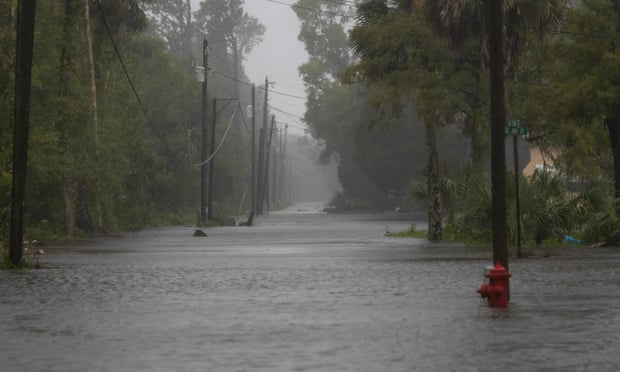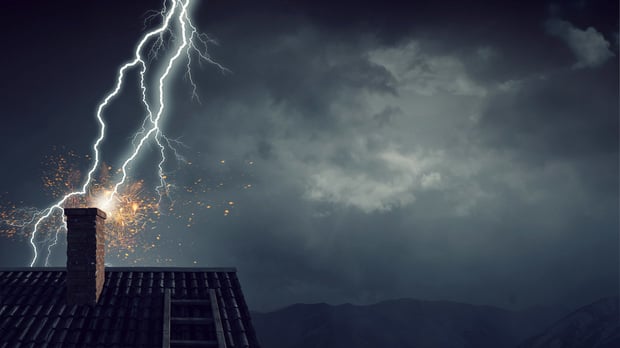By Kate Lasky, associate corporate attorney and John Parker, legal department manager, NBIS
 With the construction market suffering record lows during the economic recession, many are wondering what the prognosis is for the industry and whether there are any areas of the construction market that are growing despite the poor economy. Although the improvements in the market are slight, there are some signs of growth and certain segments are doing particularly well, even in these tough times.
With the construction market suffering record lows during the economic recession, many are wondering what the prognosis is for the industry and whether there are any areas of the construction market that are growing despite the poor economy. Although the improvements in the market are slight, there are some signs of growth and certain segments are doing particularly well, even in these tough times.
Although residential building still has a way to go, commercial building and non-building construction is slowly making a comeback. Green construction in any of these areas continues to expand rapidly and maintain its place as the new, “hot” construction trend. By educating oneself in green construction, and making oneself available to this rapidly expanding market, the immediate future can be brighter.
The recent forecast and trends of construction provided by McGraw-Hill Construction, a leading provider of construction project and product information, states that overall April 2010 construction starts dropped by 9 percent. This decline was due mostly to a slowdown in both nonresidential and residential building. However, nonbuilding construction saw an increase of construction starts of 19 percent in February 2010 and 6 percent in April 2010. Nonbuilding construction starts were dominated by environmental public works, highway and bridge construction. New road paving and widening projects funded by recent federal stimulus initiatives accounted for most these construction starts.
Our own company data indicate a modest incline in coverage submissions, suggesting that the construction market may be on an upward movement after hitting a low point in recent years. Ultimately, the more submissions that insurers are receiving, the more construction and building is continuing to rebound.
Commercial construction in the areas of educational facilities, government offices and healthcare facilities are also continuing to offer opportunities because of stimulus funding being spent in these state and local projects. According to Plunkett Research Ltd., there will continue to be a demand from the healthcare sector for new or remodeled properties as the demand for medical facilities increases with the percentage of Americans over age 65 continuing to expand.
The nonbuilding construction industry consists of those engaged in the construction of projects including: railroads, highways, bridges, dams, irrigation systems, water or gas supply systems, pipelines, electric utilities, and in the general repair of such structures, machinery or equipment. According to the McGraw-Hill Construction Forecast & Trend report for February 2010, nonbuilding construction grew 19 percent, with a $917 million project for the DFW Connector near the Dallas-Fort Worth International Airport in Texas being one of the larger projects contributing to this increase. The project has about one-quarter of its financing from federal stimulus funds. The April 2010 McGraw-Hill report also showed growth in nonbuilding construction. There was a strong increase in environmental public works, with the river/harbor development category jumping 28 percent due to the start of several projects connected with the ongoing hurricane reconstruction in the New Orleans area. Electric utility starts in April had an extremely significant increase of 566 percent, due in large part to new wind farms in Oregon, Indiana, Illinois, Oklahoma, Washington and Maryland. This boost was also supported by the April start of a $530 million natural gas power plant in California.
Green LEEDs the way
Although the overall numbers are still somewhat bleak, one area of construction that continues to grow at a rapid rate, even in the economic downturn, is green construction–a broad term used to describe the design, construction and operation of buildings that are environmentally conscious and use sustainable materials in their construction.
The U.S. Green Building Council (USGBC) reports that the green market was 2 percent of non-residential construction states in 2005, 10 percent to 12 percent in 2008, and will grow to 20 percent to 25 percent by 2013. Green building is not only popular in new construction, but is also becoming increasingly popular in retrofitting existing buildings to decrease operating expenses by becoming more energy- and water- efficient. USGBC also estimates that green building will support 7.9 million jobs in the U.S. and infuse approximately $554 million into the U.S. economy in the next four years.
There are many driving factors behind the new trend of green construction, including government initiatives, a heightened residential demand for green construction and improvements in green materials. Green building is not only popular with residential building, but is becoming more attractive with education, government, institutional, office, healthcare and retail buildings. With these projects continuing to grow because of stimulus funding, many are also turning to green construction for added government incentives.
Although there is an upfront investment increase of approximately 2 percent in constructing a green building, the long-term savings far outweigh the initial investment. Compared with the average commercial building, green buildings consume 26 percent less energy, have 13 percent lower maintenance costs, 27 percent higher occupant satisfaction, and 33 percent less greenhouse gas emissions, USGBC states. There is also evidence that occupants of green buildings are generally healthier and more productive.
According to a recent article by Lowe's Commercial Services, builders and remodelers who are looking to grow in 2010 should consider green building, particularly “net zero” energy buildings. These are structures that create as much energy as they consume, using wind turbines, solar panels and energy management equipment. Builders who may have lost business during the economic downturn are helping to secure their future growth by becoming educated in this area of construction so they can contribute to these new construction trends moving forward.
Many builders also are choosing to seek Leadership in Energy & Environmental Design (LEED) certification of their projects. LEED is an internationally recognized green building certification that provides verification that a building or community was designed and built using strategies that improve energy savings, water efficiency, indoor environmental quality, lower operating costs and increase asset value.
Changes in corporate America
Siemens Industry, Inc., the world's leading supplier of production, transportation and building technology solutions, partnered with McGraw-Hill Construction to publish a 2007 report on the attitudes and practices of some of the leading U.S. corporations in green practices. The study was repeated in 2009 to re-examine those findings and see how the challenging economic times had impacted the study. The Siemens/McGraw- Hill Construction Study on the Greening of Corporate America sought to discover how much green building and sustainability had been adopted and embraced by corporate America versus the public sector.
The study found that corporate America's attitude has shifted toward accepting sustainability as part of a corporate strategy. Of most significance to the building and construction industry. The study, originally conducted in the depths of the recession, showed that more than 60 percent of those polled said sustainability initiatives were continuing or growing. Although the pace may have slowed, it is the one area that is not going backward.
The study states that one of the major indicators of the shift toward green building is legislation. As of June 2009, 44 states had some form of green building legislation and initiatives. This legislation helps bring issues of energy conservation to the forefront of debate, and as a result, also affects the construction practices of private sector buildings. The study reports that in 2005, green building represented only 2 percent of overall construction, but that construction forecasts showed a growth of 15 percent to 20 percent of new construction starts in 2008, despite the overall downturn in construction.
The green building market, including both nonresidential and residential, is forecast to grow to $96 billion to $140 billion by 2013. Green building is steadily becoming the standard practice, with the major motivation driving corporations into green building being energy cost savings.
One monastery's story
A recent example of green building is the Holy Wisdom Monastery in Middleton, Wis. In March 2010, the monastery received the highest LEED platinum rating in the U.S. to date for sustainability, energy efficiency and choice of materials. According to the Holy Wisdom Monastery's website, the original building was 60,000 square feet, but after responsibly deconstructing the building and reusing or recycling 99.75 percent of the original building, it is now “right-sized” at 30,000 square feet.
The building was constructed at a cost of $246 per square foot, and the monastery is proud that it was able to build one of the greenest buildings in the U.S. at such a modest cost. Windows provide daylight to 85 percent of the occupied space in the monastery and each window was customized based on its location and orientation to the sun to reduce glare and minimize unwanted solar heat inside the building. The monastery wants to eventually provide 100 percent of its energy needs on a net basis from on-site, renewable sources.
Because builders are becoming more knowledgeable about green construction, insurers have also come to see the value of green buildings. As such, insurers must become educated about the needs of insurance for the green construction industry.
Studies show that green structures present fewer property risks than traditional buildings. Ceres, a U.S. coalition of investors and environmental groups that works to address sustainability challenges, recently issued a report that outlines new green insurance offerings. This report indicates that insurers are continuing to take climate change into account when developing or adding to their insurance offerings.
The report indicates that there are hundreds of new offerings for insurance coverage of green buildings. To progress with the current trends in the construction market, it is imperative that insurers become knowledgeable in the field of green construction so they can meet the needs of their insureds as they change their building projects to advance with this market.
Want to continue reading?
Become a Free PropertyCasualty360 Digital Reader
Your access to unlimited PropertyCasualty360 content isn’t changing.
Once you are an ALM digital member, you’ll receive:
- Breaking insurance news and analysis, on-site and via our newsletters and custom alerts
- Weekly Insurance Speak podcast featuring exclusive interviews with industry leaders
- Educational webcasts, white papers, and ebooks from industry thought leaders
- Critical converage of the employee benefits and financial advisory markets on our other ALM sites, BenefitsPRO and ThinkAdvisor
Already have an account? Sign In Now
© 2024 ALM Global, LLC, All Rights Reserved. Request academic re-use from www.copyright.com. All other uses, submit a request to [email protected]. For more information visit Asset & Logo Licensing.








